Home & Living
Carmen Brock’s Charles Village Home is a Treasured Trove
The owner of now-closed home goods shop, Trohv, fills her house with beloved pieces that all have their own stories to tell.
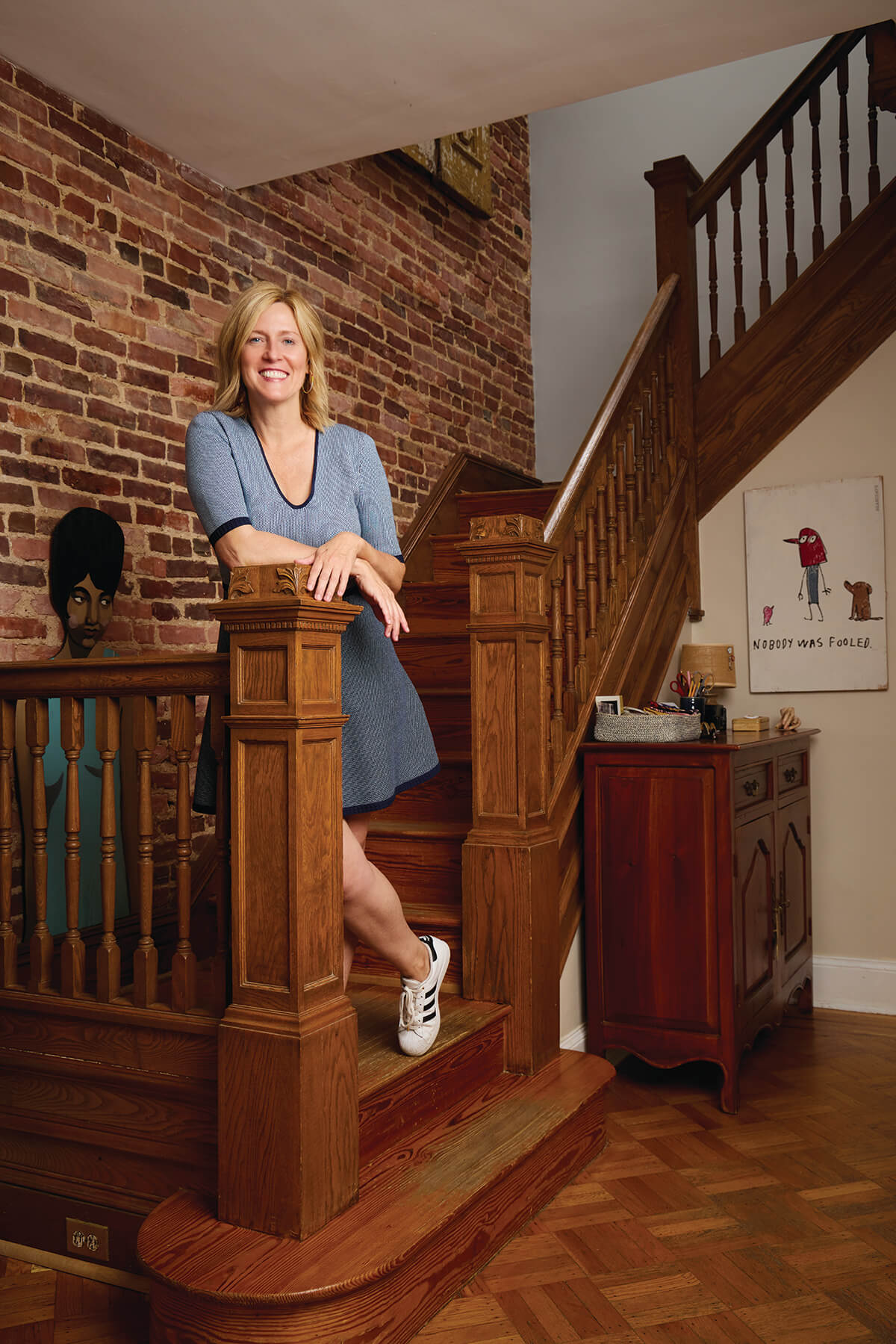
Carmen Brock and her house felt like strangers in the summer of 2020. Brock, the beloved owner of home goods shop Trohv, had spend the past 14 years living and breathing her store on the Avenue, which often meant ignoring her Victorian-style rowhome on Guilford Avenue, in the heart of Charles Village. It was merely a place to rest her weary head.
When, due to the weight of the pandemic, Trohv closed for good in August 2020, suddenly Brock, who was a Baltimore City middle school teacher before opening Trohv, found herself only being at home. And a reintroduction began.
“It really was a refuge—with the shop and even when I was teaching, I just wasn’t here that much,” she says.
But when Brock found herself unmoored, it was her home that she craved.
“I’m truly head over heels for the comfort that your own space can bring you,” she says. “It’s not just comfort, it’s also a place where I was experiencing loneliness and heartbreak. A safe, tender place where I could mourn Trohv. It felt like it held me.”
When Brock and her ex-husband bought the house in 2002, the housing market was “bananas,” she says. It was the fourth house they put a bid on. “I was so happy that I got it. The community here really takes notice and care of each other.”
The house, built in 1914, had good bones. “I was so drawn to the skeleton of this place, and I love sharing walls,” says Brock, who grew up on a cattle and tobacco farm in Kentucky. “I know that can be annoying when it comes to gatherings or parties, but I actually really love it. I had never been exposed to rowhomes before.”
The home was in incredible shape when she first moved in, and the original wood floors are still a gorgeous honey color with an impressive inlay border throughout her family and dining room. Tucked in the middle of the block, the 2,000-square-foot home also gets bathed in natural light thanks to three skylights scattered throughout.
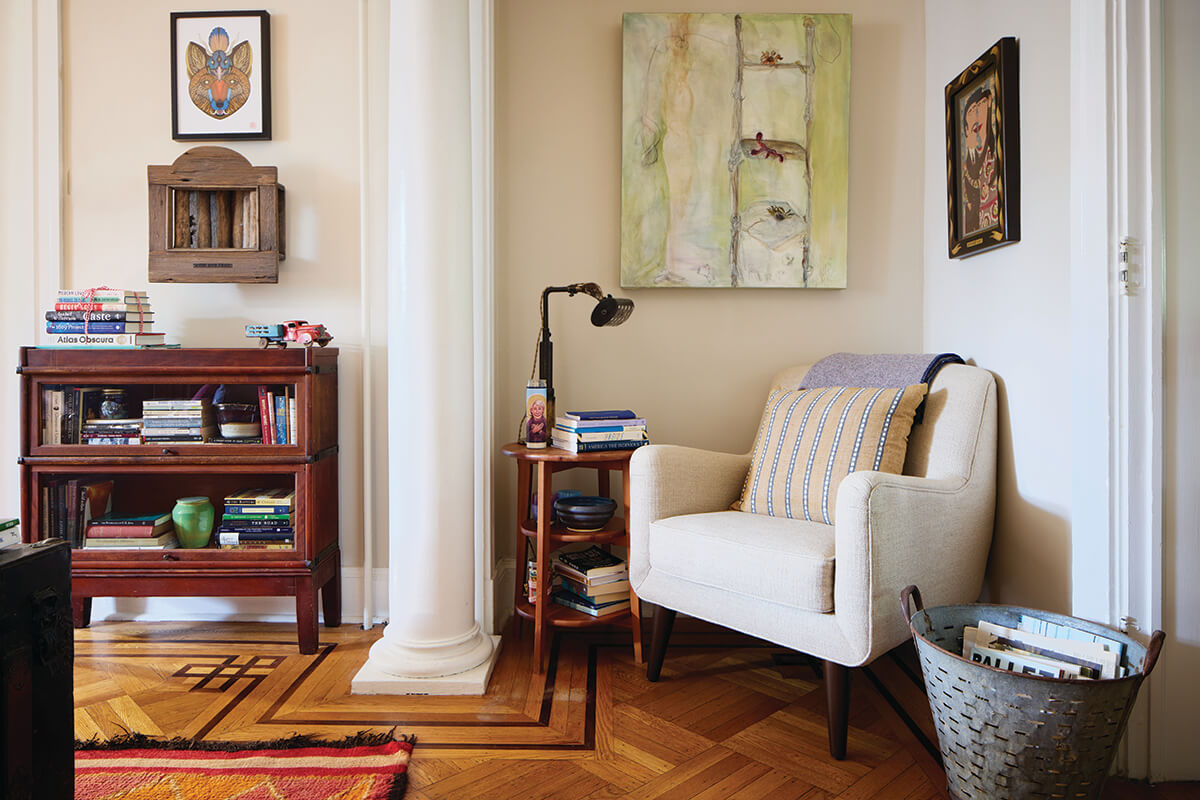
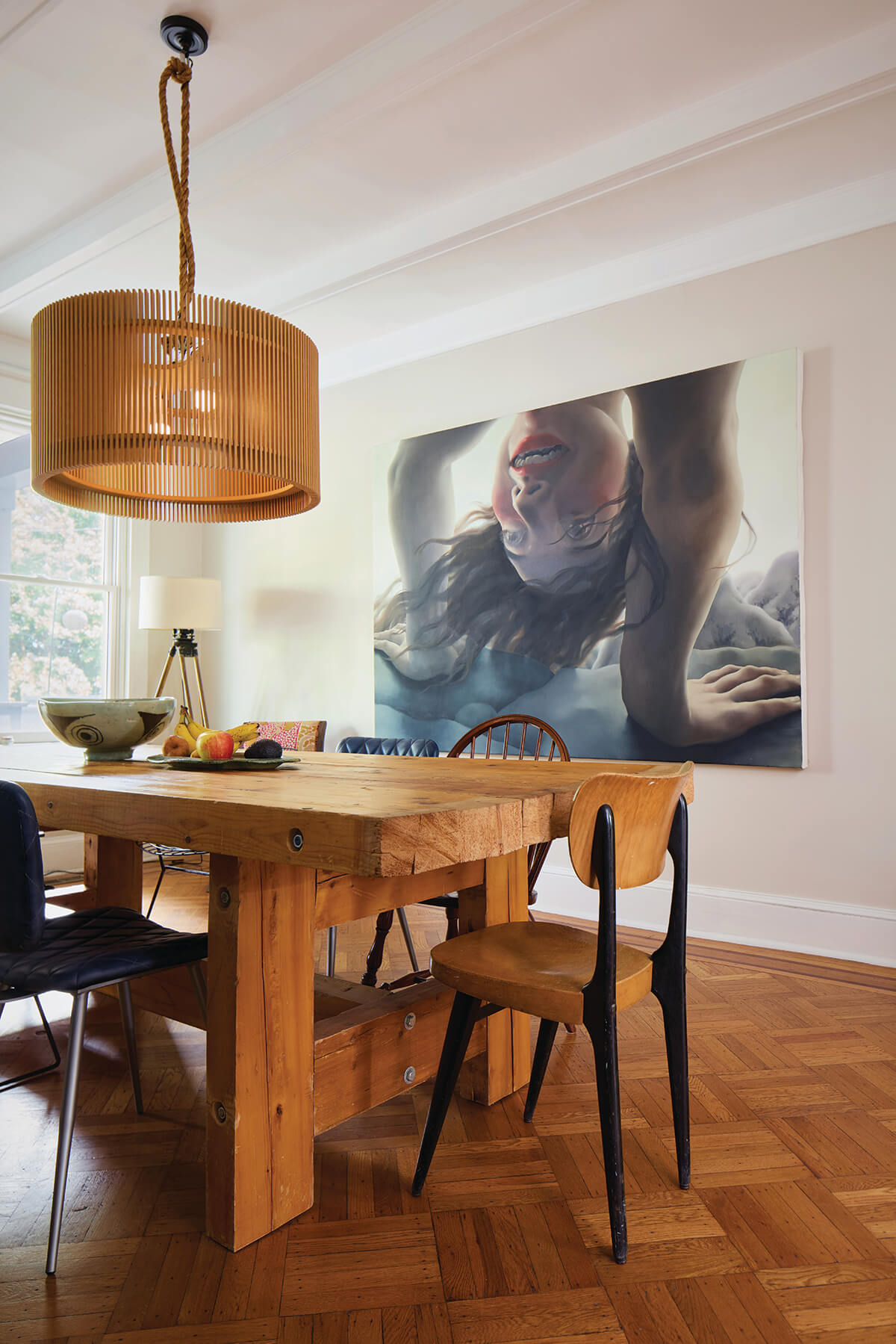
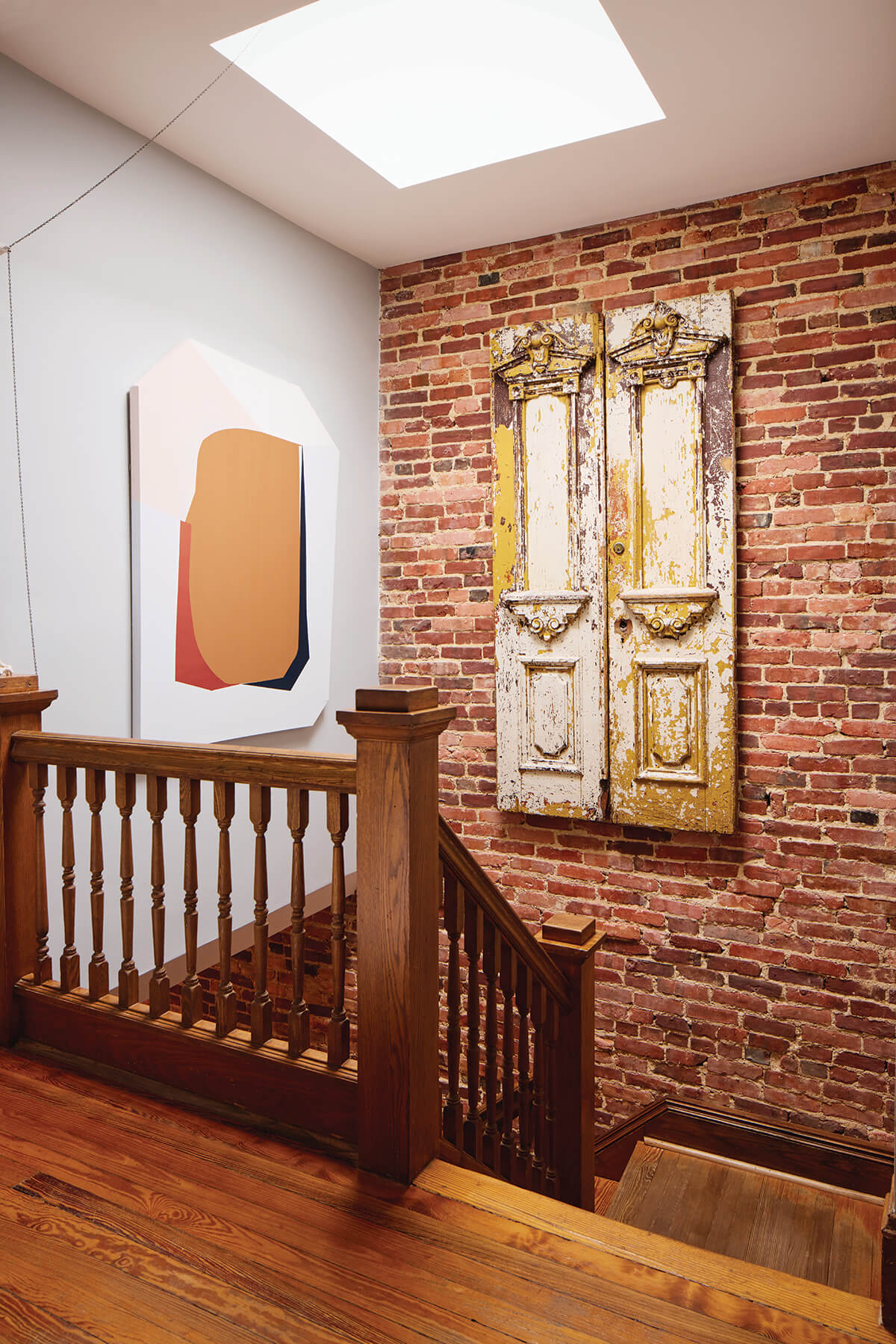
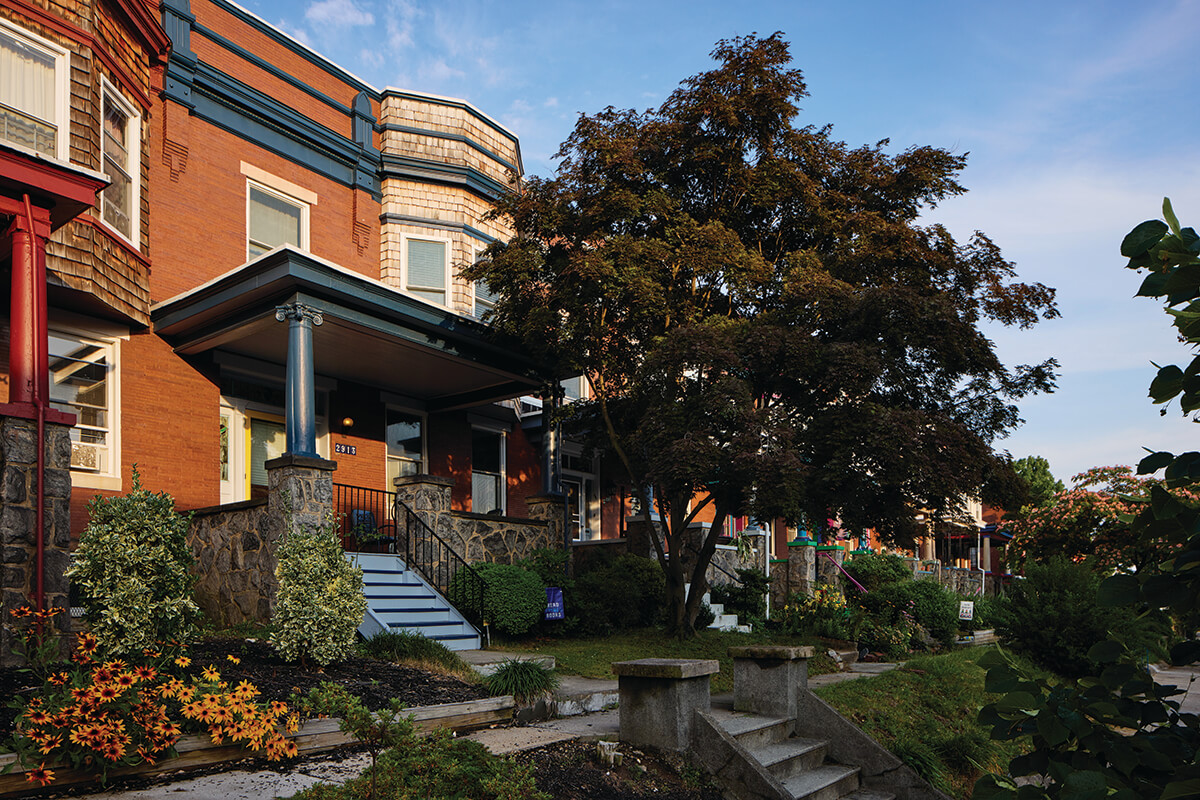
While Brock’s house is not a Trohv showroom, “there is definitely a relationship there.” She describes it “almost like a sibling relationship in a way. If I was picking or buying or searching or rummaging for the shop and I found something that felt really special and I just absolutely fell in love with it, I would keep it.”
One of the best things about Brock’s home is its deliberateness. Every piece has a personal connection to Brock, and her design philosophy seems to be “worth the wait.” She got her very first coffee table 10 years after she moved into her house. She buys things piece by piece over months, years, even decades, as opposed to trying to outfit a room all at once, which she knows is not the norm.
“It’s not necessarily the approach people want to take,” she admits. “But that’s how I’ve put my house together. I just didn’t have a coffee table until I found the one that I wanted.”
Brock and her coffee table met at the Brimfield Antique Flea Market in Massachusetts, an annual show that spills out over acres of land. The table, one of 15, looked like a gallon drum and a barrel had a baby. In fact, it wasn’t a table at all. It had giant arms on it and had been used for preserving cans in a big factory. Brock went ahead and bought all 15, then loaded them onto a huge truck, drove them back to Baltimore, rolled them into Trohv, removed the arms—“I took a welding class in high school”—and sold 14 of them. The fifteenth went into her house. It now sits in her front room, nestled between her couches. It’s so heavy she often jokes it conveys with the house. “I don’t expect to move it—but it’s fine.”
Brock’s house was also completely rugless until a trip to Morocco in 2019, where she bought six rugs. “Half went to the shop and the other half stayed here.”
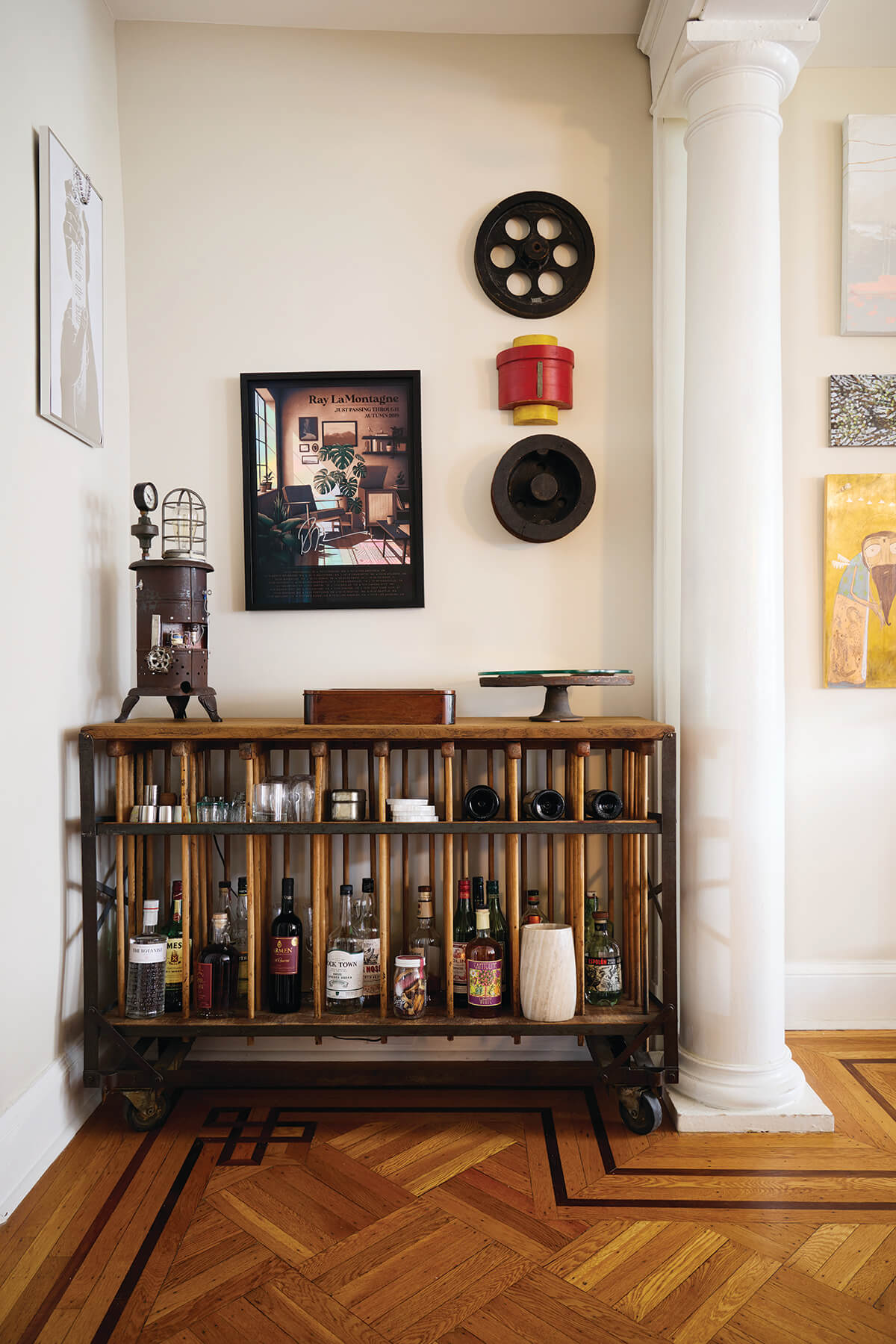
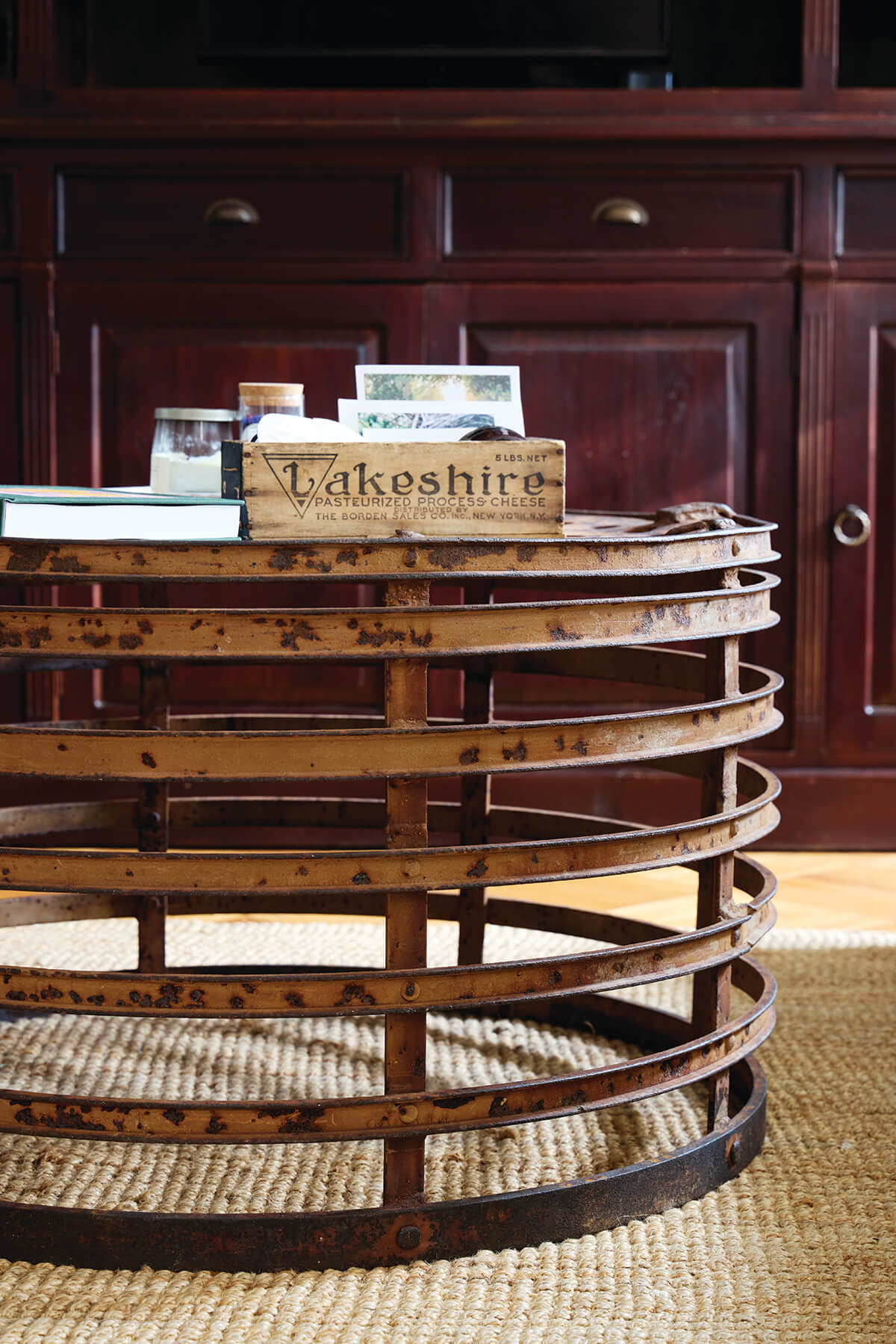
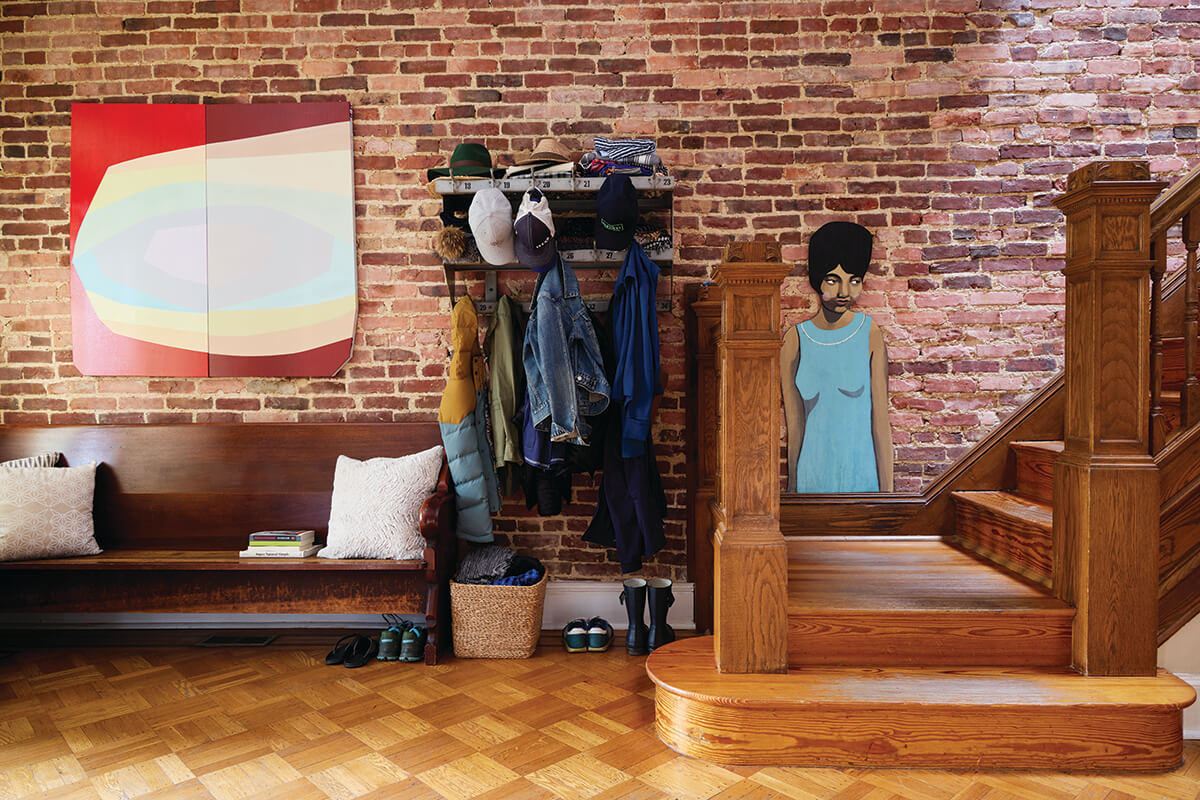
All of Brock’s stories are like this—an adventurous tale that ends with a special purchase, all told in her soothing drawl.
“My friend and I were staying at this ashram thing and there was a rug in our room, and I just asked the guy if he’d be willing to let me pay for it. And was he was like, ‘Yes, it’s disgusting. It’s been here for like 20 years.’” In the end she shoved three rugs into a suitcase and took the other three in her carry-on. “Isn’t it ridiculous,” she chuckles. But the thing about Brock is you don’t feel like it is. It feels like it’s always worth it for the right piece.
There’s the coat rack in the front entrance of her home with “New York School of Art & Design” messily written on a piece of green tape that’s still stuck on the side. “It’s definitely one of my favorite things,” she says. “I think that if it could talk, just the minds and ideas that have brushed past this, even by osmosis, I want to learn from that.”
Brock loves the idea of owning things that have existed in a previous life. “It’s had a life longer than me.”

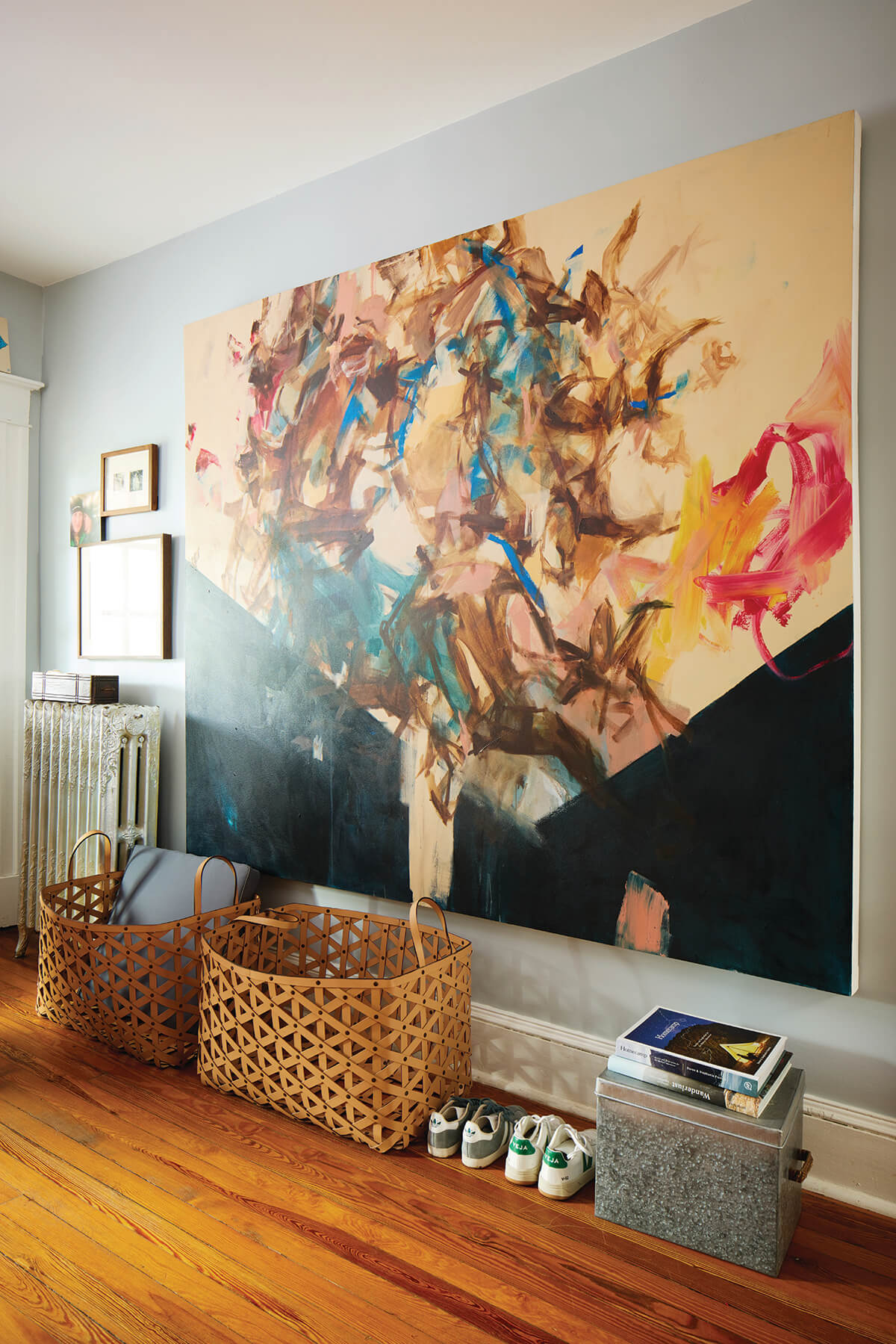
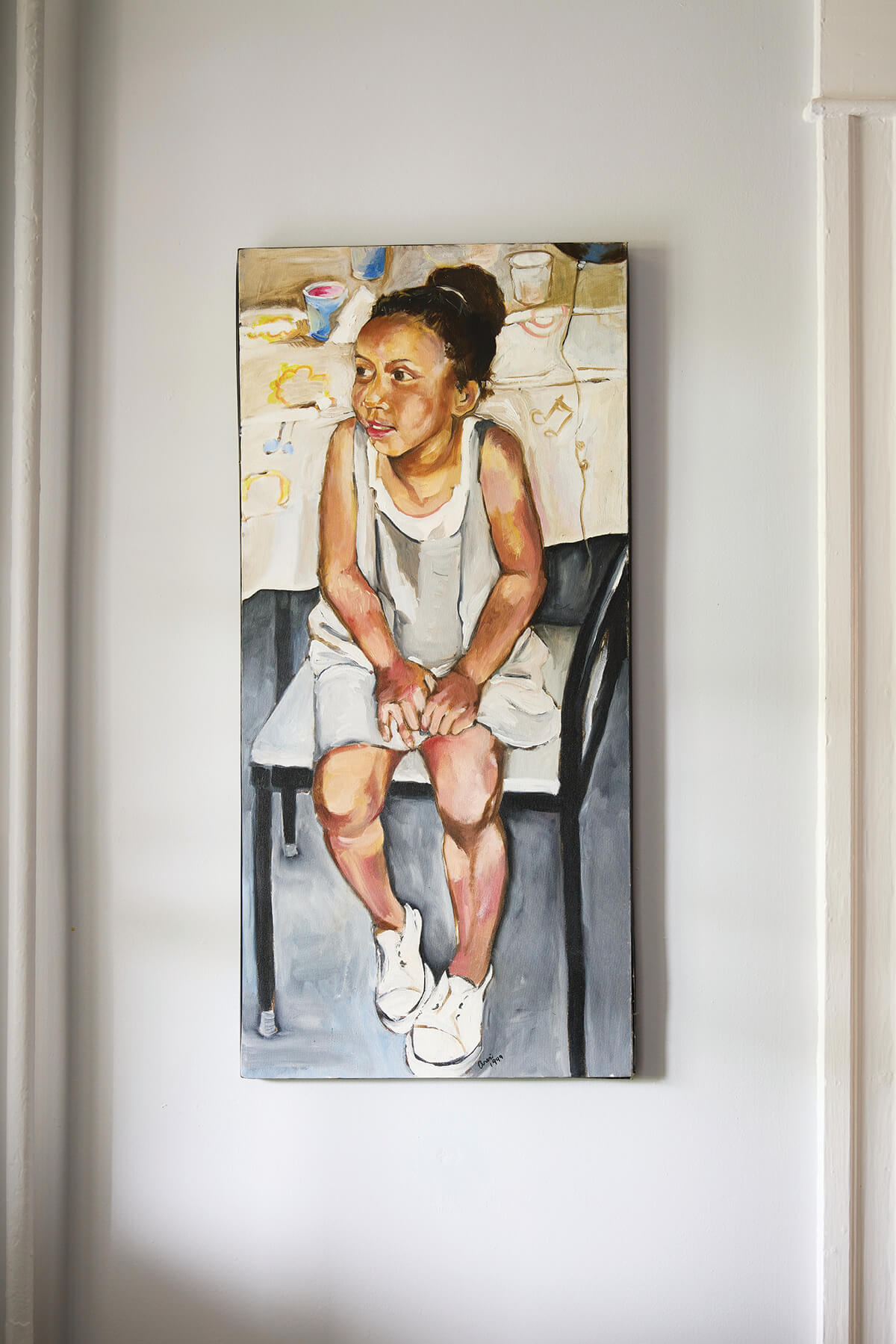
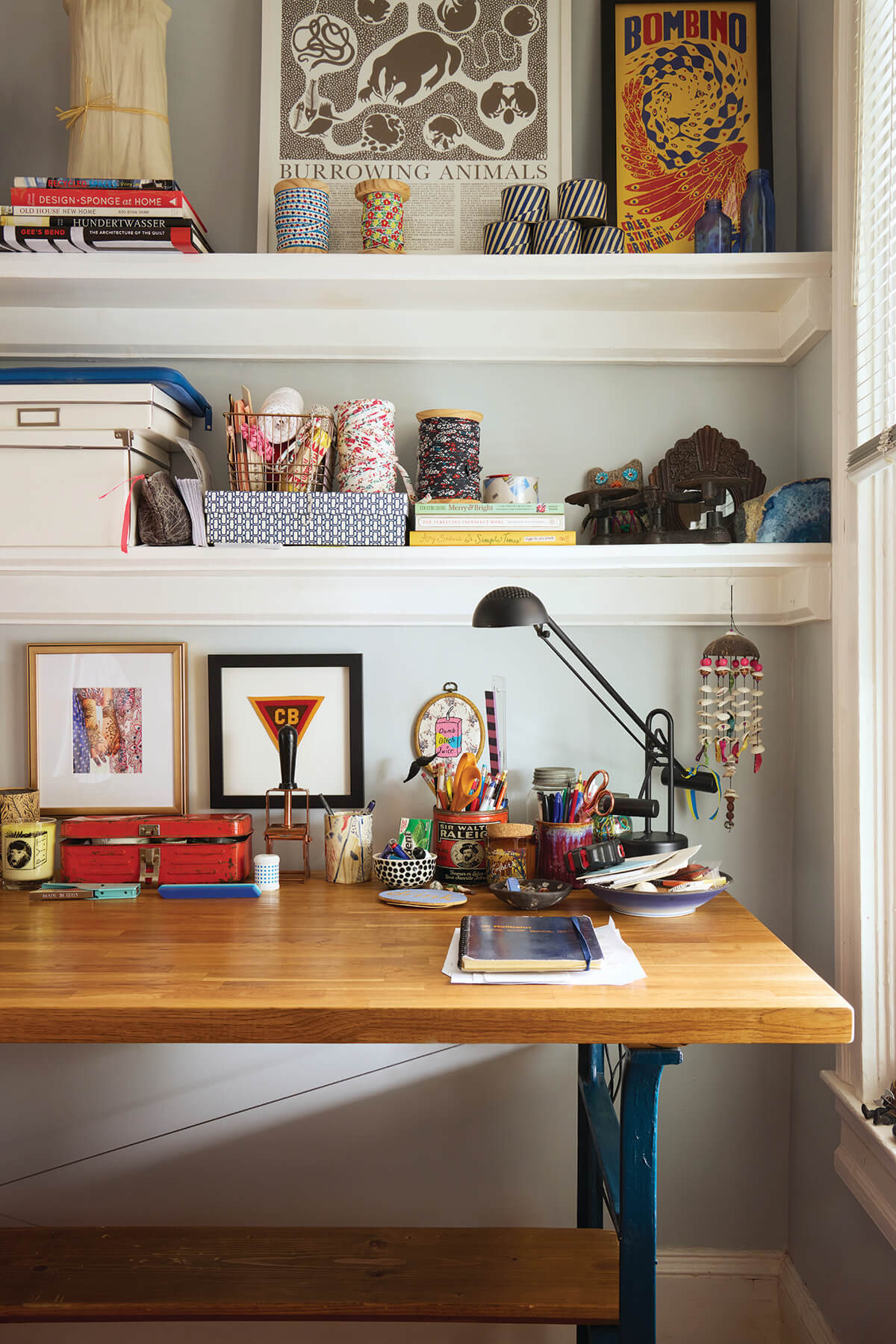
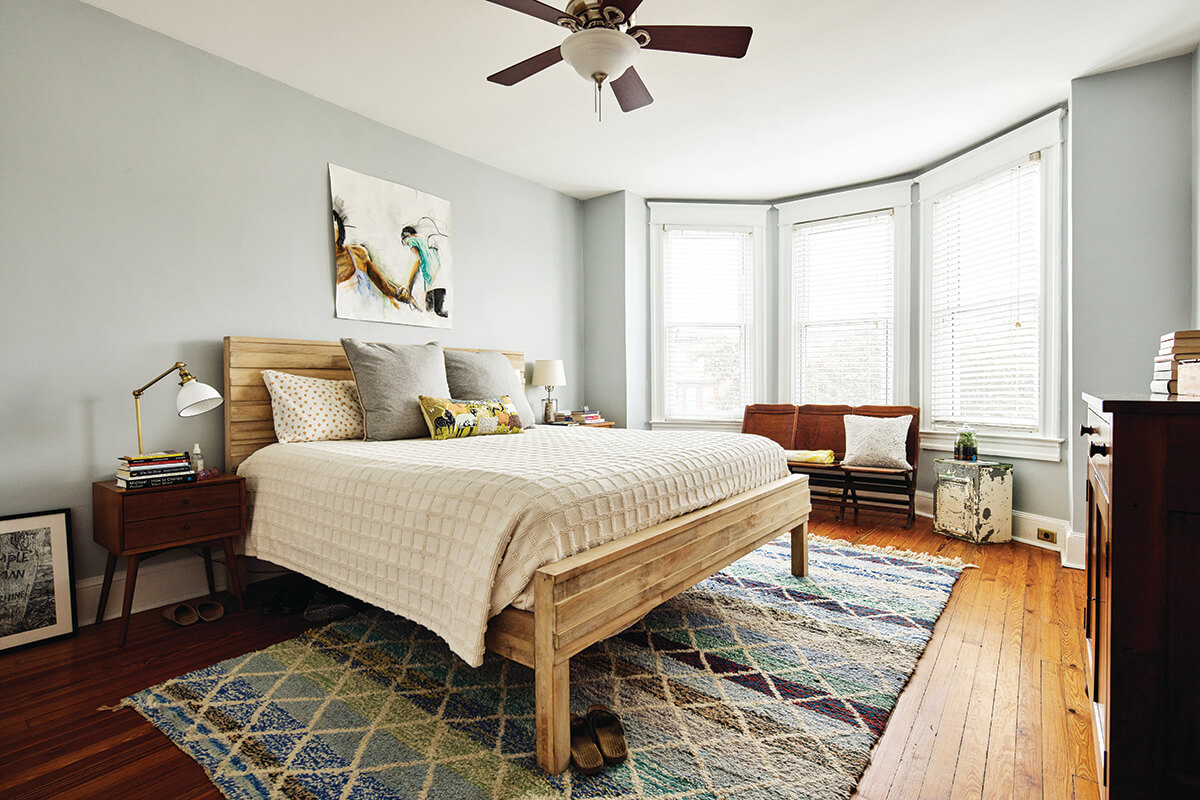
As she stands in her bedroom, Brock points out that the positioning of her home—the top of a hill facing west—means this room gets pretty good sunsets. “It took me several years to notice it,” she says.
“It took me several years to notice a lot of things in this house.” The summer that Trohv was closing, “I must have watched 60—no kidding—sunsets that summer. I don’t know if it was the wonder of it, the silence of it. It was part of getting me through.”
Brock, who is working at the soon-to-open Church Bar in Old Goucher and just started offering “home consultations by Trohv,” is getting steady on her feet again.
“I feel like I’m in a better place,” she says. “I don’t know if I’m in a good place, but better—which I’ll take.”
Her house has helped get her to that better place. She says everyone assumed that, as the owner of a home goods store, she enjoyed her own house, “but I enjoy it now more than I ever have. And that is a surprise to me.”
One of the things that brings Brock the most joy is the artwork scattered throughout the house—on the walls, the stairwell, hidden in the bathrooms. All are deeply meaningful and connect her to a specific moment in time. There’s a piece by Katie Pumphrey, called “Fever Dream,” that hangs in Brock’s office. She bought it in 2017 when her dad died, and she was feeling adrift. There was something about the piece that “fit” her grieving.
“I love it and I love thinking about my dad. It doesn’t bring me sadness at this point, it brings me such joy to think about him.”
A charcoal and graphite piece by Lee Nowell Wilson, showing a woman trying to fold herself into a cardboard box, heaving at the sides, represents the loss of Trohv. And the giant 4-by-5-foot painting that hangs in her dining room instantly took Brock back to her childhood of chasing bumblebees around the farm. It was done by Jordan Kasey, a MICA grad who now lives in New York.
“This is from 2007—she graduated in 2008. This is one of my favorites.” The piece—the thing she would grab if her house caught fire—is of a young girl doing a handstand. Her cheeks pink, her mouth slightly agape. “It feels soft and approachable and tender and playful,” she says.
But Brock loves asking her guests their interpretation of each piece of art, too. “I dated this guy once and he came in and was like, ‘Carmen, your house is like a museum.’ And I think he meant it as a compliment, but I also feared there was maybe this non-cozy quality to that. And I hung my hat on that probably a little too long. I do think he meant it in a nice way. But I want people to come in and throw their shit around—I do.”
It’s taken 20 years, but for now Brock’s house finally feels like home—her home. Each time she departs, she steps onto the porch, doorknob in hand, and stops for a second.
“When I leave the house—this is literally what I say—‘Thank you. I love you. Please be safe when I’m gone. And thank you for your hospitality and love.’”